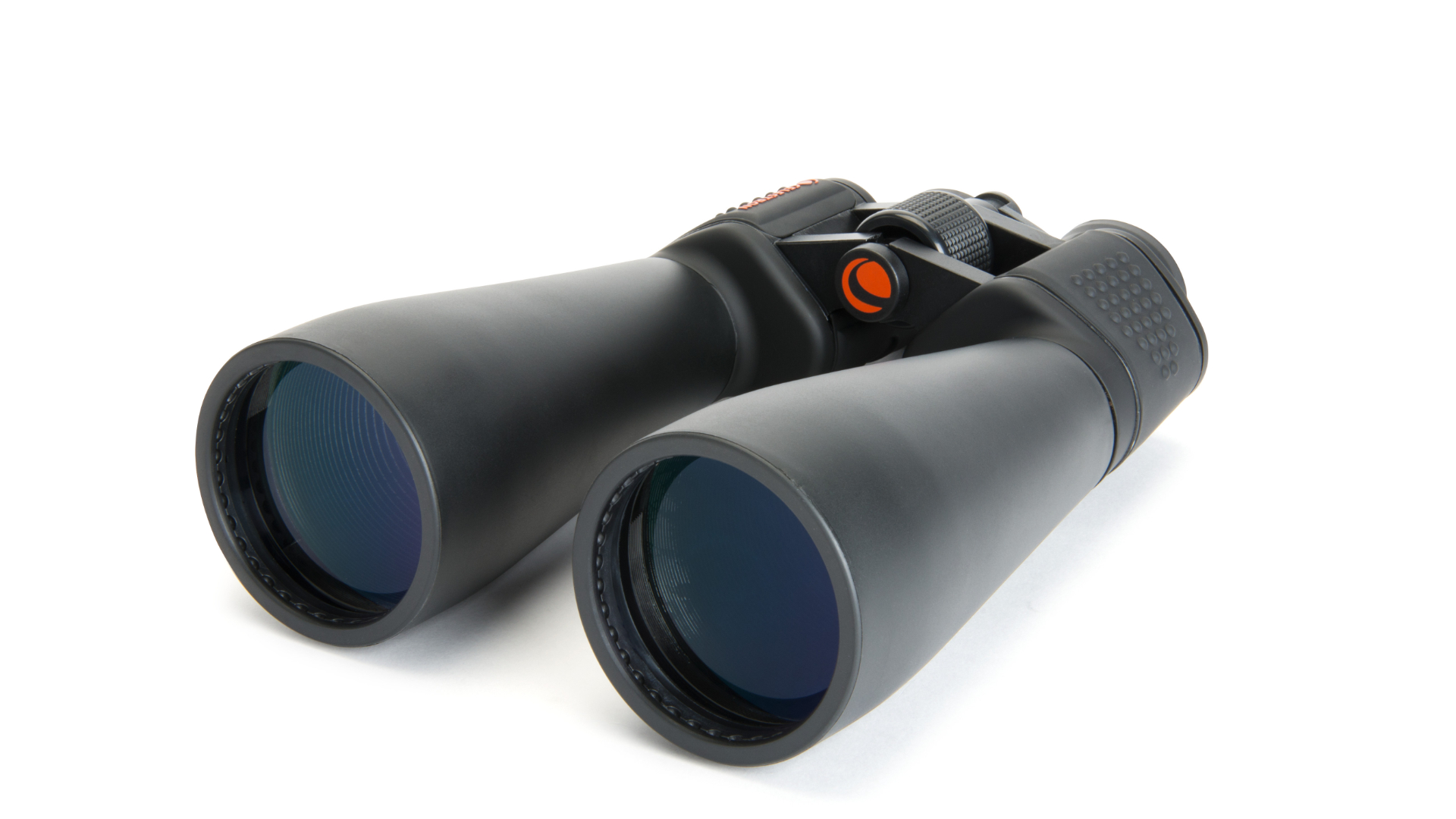Advnture Verdict
At this price point, every home should have a pair of dedicated stargazing binoculars. They are a great entry-level tool for starting to find your way around the universe, and are guaranteed to put you on more familiar terms with our own satellite, the Moon. You might think that a cheap telescope is the way to go, but binoculars have the benefit of gathering more light to provide you with a clearer and more 3D image. The Celestron Skymaster 15x70 binoculars are excellent, and encouraged the whole family to spend more time outside exploring the night sky.
Pros
- +
A great way to explore and marvel at the universe
- +
At this price every home should have a pair
Cons
- -
Heavy and bulky so not made for hiking trips
- -
Not ideal for nature watching, but good for big views
You can trust Advnture
First thoughts
Next to all the other binoculars we tested, the Celestron Skymaster 15x70 are comically large. They are the kind of thing you might expect to see on the set of a WW2 naval epic, scanning the ocean for U-Boats. The whopping 70mm objective light is designed to gather light, while the 15 times magnification promises impressive views of the lunar surface, Jupiter, cloud nebula and – some people suggest – even a hint of the rings of Saturn.
Use them in daylight and you notice the first problem with binoculars of this magnification. It is incredibly hard to stop the image from wobbling. These offer 15 times magnification and if you are looking at anything at a distance, you probably need to take advantage of the tripod adaptor.
- Browse all of the best binoculars in our buying guide
- Learn how to use binoculars – and find the best pair for you
- Look for the best locations in the US for dark sky stargazing
We used this pair almost exclusively on short walks from the house and rested elbows on available walls or park benches to try to maintain stability. I’d love the idea of taking these on a summer wildcamp, but don’t think I’d ever be able to justify the weight (1361g/48oz). In fact, these are more than twice the weight of more standard wildlife watching pairs we tested and far too bulky to pack in a rucksack.
• RRP: $95 (US)/£89.99 (UK)
• Size: 280mm length; 220mm width 11in length; 8.7in width
• Weight: 1361g/48oz
• Magnification: 15
• Objective diameter: 70mm
• Field of view at 1000m: 77m
• Close focusing distance: 13m/43ft
In the field
Galileo was the first person to recognise the four moons of Jupiter in 1610AD: Callisto, Ganymede, Europa and Io. He was using a telescope with a similar magnification, and these binoculars in the right hands should give experienced stargazers a similar view. He also saw the rings of Saturn, but did so with a telescope that had an effective 20x magnification and that’s too much to ask of these binoculars.
I’m no stargazer: I can just about spot the Plough and Orion. Using the Celestron Skymaster 15x70 binoculars, I did manage to identify planets like Mars and Jupiter with the aid of a mobile stargazing app. But for a complete beginner, like me, the most accessible object of attention is the moon.
These binoculars can deliver incredible views onto the crater-strewn lunar surface and the shadows cast across its vast seas of Serenity, Tranquility and Fecundity. Each one is actually a large basilic plain – mistaken for actual seas by early astronomers.
I’ve used my own 8x44 binoculars to get better views of the moon, but this was something altogether more impressive. I spent a number of clear nights out with my kids, who were really impressed with what they saw. While they were busy with the binoculars, I hurriedly consulted my start gazing app so I could impart a few words of wisdom.
All the latest inspiration, tips and guides to help you plan your next Advnture!
On night walks around my local common, I found I could point these into a seeming clear part of the sky to reveal hundreds of stars invisible with the naked eye. I’m not going to pretend I saw Jupiter’s moons or Saturn’s rings, or that my view of Mars was anything more than an even larger red glowing body. But spending time with these binoculars did feel like the start of a journey that I’m keen to continue.
Nor am I going to pretend that these were easy to use: the image wobble is incredibly frustrating – so I think a decent tripod is probably essential if you are going to get serious about the night sky. I do think these are an excellent investment, especially when coupled with a free mobile app.
Former Editorial Development Director for Lonely Planet, editor of Trail and BBC Wildlife magazine, and editor-in-chief of Trail Running magazine, Matt got the outdoor bug as a teen on gruelling UK Ten Tors events around Dartmoor. He has hitch-hiked to Egypt, cycled through India, enjoyed the delights of the High Atlas, slept on volcanoes while living in Central America, climbed in the Alps and tackled some of Scotland’s really big routes, from Tower Ridge and the Cuillin to the Aonach Eagach. He’s got a passion for butterflies and ukuleles. If you see him in a campfire situation… approach with caution.


